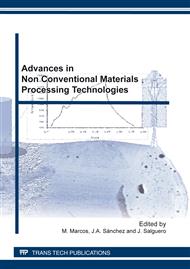p.1
p.7
p.13
p.19
p.25
p.31
p.37
p.43
Application of Different Simulation Strategies for the Analysis of Multi-Stroke Localised-Incremental Forging Operations
Abstract:
The analysis of LIF operations is often difficult, especially when several strokes are necessary to obtain the final shape of the part. The use of FE models is highly recommended and it is known that implicit FE models give more robust results than explicit FE models; however, with the former methodology there are several problems that must be faced. With the main goal to extend the analysis capability of LIF operations, some explicit FE models are developed in this paper and results are compared to those obtained by implicit methodology. It can be concluded that taking into account these guidelines, the developed models could be further used in the analysis of multi-strokes LIF operations, where more complicated trajectories are going to be used.
Info:
Periodical:
Pages:
19-24
Citation:
Online since:
February 2012
Permissions:
Share:
Citation:


